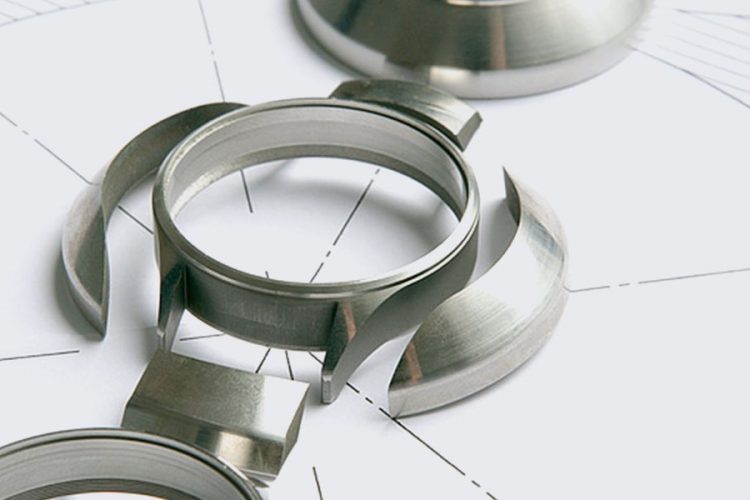Using the so-called wire erosion technique, high-voltage electrical discharges are used to cut the steel into a nearly finished watch casing shape. The application of this costly and time-consuming technique results in an extremely sleek and detailed product. Once the basic shape of the casing is there, all holes, threads and compartments that are required for attaching the poussoirs and the crown construction developed in house are cut.
Subsequently, the casing is subtly touched up by hand. Using pieces of sanding and polishing wood, the matte surface is removed and the steel is polished to a high-gloss walnut granulate. The next step entails hardening the casings and making them ready for assembly.
Van der Gang applies knowledge and techniques used in the precision engineering industry in, among others, the aerospace sector and to develop medical products, which is unusual for a watchmaker. Applying this precision engineering expertise has made Van der Gang a respectable, innovative and state-of-the-art party in the watchmaking industry.
The beauty of a Van der Gang watch lies in a well-balanced design and exceptional production techniques. A Van der Gang is cutting edge. The points of the hands, the way the toothing is mounted in the crown - everything has been designed based on technology.
After extensive testing, the sapphire glass of the 'Vlieger' only turned out to be perfect at a thickness of 2.6 mm, an unusual thickness for a watch glass. But not for Van der Gang, as only the best will do. In combination with the beautiful faceted edge, the glass is a prime example of production at the highest conceivable level.



